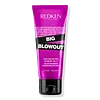What's inside
What's inside
 Key Ingredients
Key Ingredients

No key ingredients
 Benefits
Benefits

 Concerns
Concerns

 Ingredients Side-by-side
Ingredients Side-by-side

Water
Skin ConditioningPropylene Glycol
HumectantTrisiloxane
Skin ConditioningHexylene Glycol
EmulsifyingDimethicone/Vinyl Dimethicone Crosspolymer
Skin ConditioningPolyacrylamide
C13-14 Isoparaffin
EmollientParfum
MaskingPhenoxyethanol
PreservativePvp
Emulsion StabilisingLaureth-7
EmulsifyingEthylhexylglycerin
Skin ConditioningLaureth-4
EmulsifyingLinalool
PerfumingSerica Powder
Skin ConditioningBenzophenone-4
UV AbsorberLimonene
PerfumingGeraniol
PerfumingEugenol
PerfumingCI 60730
Cosmetic ColorantCI 60725
Cosmetic ColorantCI 17200
Cosmetic ColorantCI 19140
Cosmetic ColorantTocopherol
AntioxidantWater, Propylene Glycol, Trisiloxane, Hexylene Glycol, Dimethicone/Vinyl Dimethicone Crosspolymer, Polyacrylamide, C13-14 Isoparaffin, Parfum, Phenoxyethanol, Pvp, Laureth-7, Ethylhexylglycerin, Laureth-4, Linalool, Serica Powder, Benzophenone-4, Limonene, Geraniol, Eugenol, CI 60730, CI 60725, CI 17200, CI 19140, Tocopherol
Water
Skin ConditioningCetearyl Alcohol
EmollientCetyl Alcohol
EmollientGlycerin
HumectantDicetyldimonium Chloride
EmulsifyingBehentrimonium Chloride
PreservativeHydrolyzed Silk
HumectantPanthenol
Skin ConditioningAnthemis Nobilis Flower Extract
MaskingLavandula Angustifolia Flower Extract
CleansingMentha Piperita Leaf Extract
Skin ConditioningSalvia Sclarea Extract
AntiseborrhoeicSymphytum Officinale Leaf Extract
Skin ConditioningOlea Europaea Fruit Oil
MaskingAmodimethicone
Caprylyl Glycol
EmollientPolysorbate 60
EmulsifyingPhenoxyethanol
PreservativeQuaternium-80
Polyquaternium-37
Propylene Glycol Dicaprylate/Dicaprate
EmollientPotassium Sorbate
PreservativeCetrimonium Chloride
AntimicrobialTrideceth-10
CleansingHexylene Glycol
EmulsifyingPPG-1 Trideceth-6
Skin ConditioningCitric Acid
BufferingParfum
MaskingBenzyl Benzoate
AntimicrobialHexyl Cinnamal
PerfumingWater, Cetearyl Alcohol, Cetyl Alcohol, Glycerin, Dicetyldimonium Chloride, Behentrimonium Chloride, Hydrolyzed Silk, Panthenol, Anthemis Nobilis Flower Extract, Lavandula Angustifolia Flower Extract, Mentha Piperita Leaf Extract, Salvia Sclarea Extract, Symphytum Officinale Leaf Extract, Olea Europaea Fruit Oil, Amodimethicone, Caprylyl Glycol, Polysorbate 60, Phenoxyethanol, Quaternium-80, Polyquaternium-37, Propylene Glycol Dicaprylate/Dicaprate, Potassium Sorbate, Cetrimonium Chloride, Trideceth-10, Hexylene Glycol, PPG-1 Trideceth-6, Citric Acid, Parfum, Benzyl Benzoate, Hexyl Cinnamal
Ingredients Explained
These ingredients are found in both products.
Ingredients higher up in an ingredient list are typically present in a larger amount.
Hexylene Glycol is a surfactant. Glycols are a class of alcohols. Hexylene Glycol is a surfactant and emulsifier.
As a surfactant, Hexylene Glycol helps gather dirt and oil on your skin to be washed away.
As an emulsifier, Hexylene Glycol helps keep water and oil together. This prevents them from separating in a product. Hexylene Glycol also thins out the texture of a product by lessening viscosity.
Hexylene Glycol has a small molecular weight.
Learn more about Hexylene GlycolParfum is a catch-all term for an ingredient or more that is used to give a scent to products.
Also called "fragrance", this ingredient can be a blend of hundreds of chemicals or plant oils. This means every product with "fragrance" or "parfum" in the ingredients list is a different mixture.
For instance, Habanolide is a proprietary trade name for a specific aroma chemical. When used as a fragrance ingredient in cosmetics, most aroma chemicals fall under the broad labeling category of “FRAGRANCE” or “PARFUM” according to EU and US regulations.
The term 'parfum' or 'fragrance' is not regulated in many countries. In many cases, it is up to the brand to define this term.
For instance, many brands choose to label themselves as "fragrance-free" because they are not using synthetic fragrances. However, their products may still contain ingredients such as essential oils that are considered a fragrance by INCI standards.
One example is Calendula flower extract. Calendula is an essential oil that still imparts a scent or 'fragrance'.
Depending on the blend, the ingredients in the mixture can cause allergies and sensitivities on the skin. Some ingredients that are known EU allergens include linalool and citronellol.
Parfum can also be used to mask or cover an unpleasant scent.
The bottom line is: not all fragrances/parfum/ingredients are created equally. If you are worried about fragrances, we recommend taking a closer look at an ingredient. And of course, we always recommend speaking with a professional.
Learn more about ParfumPhenoxyethanol is a preservative that has germicide, antimicrobial, and aromatic properties. Studies show that phenoxyethanol can prevent microbial growth. By itself, it has a scent that is similar to that of a rose.
It's often used in formulations along with Caprylyl Glycol to preserve the shelf life of products.
Water. It's the most common cosmetic ingredient of all. You'll usually see it at the top of ingredient lists, meaning that it makes up the largest part of the product.
So why is it so popular? Water most often acts as a solvent - this means that it helps dissolve other ingredients into the formulation.
You'll also recognize water as that liquid we all need to stay alive. If you see this, drink a glass of water. Stay hydrated!
Learn more about Water